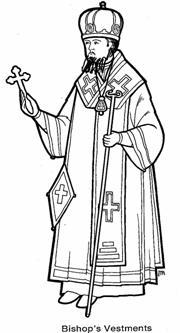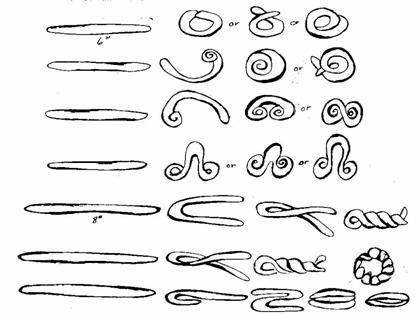Greece: Archbishop Athenagoras
ARCHBISHOP ATHENAGORAS
Objectives:
- Students should be able to say his name and tell his story.
2. Students should know that he was the first Greek bishop of the church in America.
 Possible Lesson Plan:
Possible Lesson Plan:
1. Open with prayer.
2. Tell the story of Archbishop Athenagoras of Greece and America:
For centuries the Greeks had been ruled by the Turks. Do you remember the Moslem Turks from our lessons on the Crusades and on the Fall of Constantinople? Spend a moment reviewing the founding and beliefs of Islam. Finally, almost 200 years ago, just after our country got its independence, the Greeks threw the Turks out of their country and were free to worship Jesus again. Remind the students that Constantinople is still ruled by the Turks and is called by its Turkish name of Istanbul.
Soon, Greek people were coming to our country – cotton merchants in the South, sponge divers in Florida – all wanted to have Orthodox Christian churches to worship in. They built churches and priests came from Greece. But, there was no bishop – no shepherd to lead the Greek people in America. Each church in each town just did what its priest thought was right. People argued; no one decided. Finally, Archbishop Athenagoras was elected by the bishops of Greece to be the first bishop of the Greek Church in America. He was a tall man with a long, flowing beard. He brought the churches together, built schools, started new churches. The Greek people in America had a leader for their flock. Do you remember what a bishop is? Bishop Athenagoras loved his people as a shepherd and cared for them until he died about 50 years ago.
 3. Review the role of a bishop: What was the role of the original deacons? How were new churches born in the New Testament days? How many churches were there in a city at first? The head of the city’s church was who? How did the need for more than one priest in a city develop?
3. Review the role of a bishop: What was the role of the original deacons? How were new churches born in the New Testament days? How many churches were there in a city at first? The head of the city’s church was who? How did the need for more than one priest in a city develop?
Who is the head of the bishop? (Christ Himself) What is the primary function of the bishop? (to perpetuate the church) What does a bishop oversee? (diocese) Who has the ultimate authority within a diocese? (the bishop) Who can ordain and through whose authority? Why can’t just anyone ordain a man if everyone can see he has the “gift”? What does “episkopos” mean? (overseer) Can a bishop be married? Show the picture of a bishop in his vestments. Have any of you seen a bishop?
What is the relationship between bishop, priest, and deacon?What sacraments does a bishop share with a priest and a deacon? How has the role of deacon changed through the centuries? What does the word “presbyter” mean? (representative) What does the word diakonos mean? (server or assistant)
- Play a learning game: Don’t Make a Move – Write numbers from 1-15 on Popsicle sticks. Dump the sticks in a pile on the table. In turn the students try to remove a stick from the pile. If a student moves another stick, he loses his turn and puts the stick back in the pile. If he removes the stick successfully, he must answer the question that matches the number on the stick. If he answers correctly, he keeps the stick. If not, the stick is put back in the pile. The student with the most sticks when all are chosen is the winner. Sample questions:
Who ruled Greece until 200 years ago?
Of what religion were the Turks?
Who was the founder of Islam?
Where was Mohammed born?
What is the holy book of the Moslems called?
What city fell to the Turks in 1453 AD?
What were the wars to regain Jerusalem from the Turks called?
When did Greece win its independence?
Who was the first Greek bishop in America?
Who oversees the priests of an area?
What is the territory of a bishop called?
Who is ordained as a server or helper?
Who is ordained to care for a local church?
Who has authority to ordain priests?
Is a bishop married?
5. Look at some pictures of Greece. What are its buildings like? The weather? The houses, people, clothing, customs? How are these like us and how different? What about food? Has anyone eaten Greek food? Can you remember some of the dishes? We will be making Greek sweet biscuits called Koulourakia in class. Do you like Greek food?
6. Look briefly at the Greek alphabet. No, you don’t have to learn the entire alphabet today. But, as Orthodox Christians, given that the Greek nation is Orthodox as well, that all of the early Scriptures are written in Greek, and many icons have the names of the saints written in Greek, not to mention the Greek found in our own cultures in the names of sororities and fraternities, etc., to know the alphabet would be useful. Here it is – look it over and perhaps write on the board. Recognize some letters from Russian Cyrillic alphabet?
7. Make Koulourakia: Make dough ahead of time and bring to class.
4 eggs: beat whites till stiff, then beat in yolks, one at a time.
2 cups sugar, 1/3 cup OJ, 2 tsp vanilla, ½ cup melted butter: beat all in in that order.
6-7 cups flour with 3 tsp baking powder: Add slowly until batter becomes a soft ball.
Knead till elastic. Then let students shape their sweet biscuits with a walnut-size piece rolled into a long snake, brush with beaten egg, and bake on greased cookie sheet 350 degrees for 15-18 minutes. Enjoy!

8. Close with prayer: Lord, we thank you for Your bishops who care for Your churches all around the world and pray for them every day.